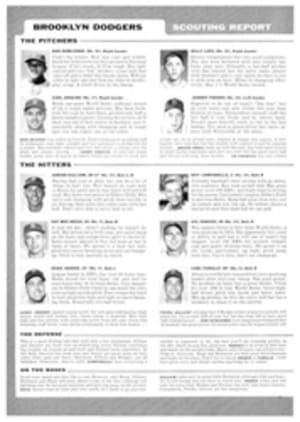
KINGS IN A CAULDRON
In his uncertain final summer, a king salmon fights his spawning instinct in a losing battle which leads him into shallow waters, increases his voracity and finally shatters his temper. Disturbed, he crosses the 50-fathom mark in the spring, lurks nearer and nearer to the mouth of the river where he was born, feeds constantly—a high-speed destroyer of everything smaller that swims in the ocean. His kill mounts daily, feeding his own muscles; and the herring wounded or shocked, the schools panicked by his savage strikes, provide easy provender for a retinue of scavengers, younger salmon, cod, crabs waiting to grab what the master drops.
In autumn, heavy with milt or eggs and no longer hungry, he—the masculine gender is used here for convenience but signifies no difference between the actions of the sexes—moves across a moaning bar toward fresh water and the spawning river which will be his deathbed. But anger has outlasted appetite, so he continues to strike furiously at whatever crosses his path, still killing after he has stopped eating, when his own flesh is darkening and near rot.
All of which is vastly important to the astonished village of Westport, Washington, which sits with a bay, fed by seven spawning rivers, at its back; miles of shallow ocean in front, and a wonderful, unbelievable, well-heeled, squirming and suicidal mass of salmon-seeking weekenders in its lap. Westport huddles on a thin peninsula between South Bay, a part of Grays Harbor, and the open ocean. In the chill and foggy dawn any Sunday morning sedans and trailers engulf the village, fighting for road room and parking space. Breakfast is something obtained on a restaurant assembly line, if at all. Five hundred to 2,000 bundled-up men, plus wives, children, dogs and sightseers, mill in a single street, buying rain gear from a clothing store open at 6 a.m., clamoring for herring, brushing rain off their hats and sand out of their teeth—and ignoring, almost to the last man, a bright red pennant flying from a lookout tower. Marine lifts groan on the shore, happy innocents struggle to carry motors from sedans to boats, and the funnel-shaped bay vibrates to the ill-tempered stuttering of reluctant engines.
All this activity proves, if anything, only that salmon sickness is a little worse than any other fishing disease—and that people suffering from it literally will do anything, up to and including drowning themselves. The open ocean won't stop them, deadly bars won't stop them, fog and wind and terrible stories won't stop them, and the forces of common sense and government can't.
Presently a marine parade begins. Out through the small end of the harbor funnel goes a charter boat, a 40-foot converted commercial troller with a weather-beaten Scandinavian at the wheel and half a dozen customers—already slightly starry-eyed at the prospect of salmon—lolling in the stern. Immediately behind it comes a kicker boat, followed by scores of others. These, too, round the end of a sandspit, where a Coast Guard patrol boat rolls gently.
From this a boatswain bellows, "Storm warnings are up [that red pennant from the tower]. The tide's still going out. Stay inside until it turns. Watch for fog. Stay off that shallow water on the Middle Grounds. Don't go over the bar until the tide turns!"
Whereupon, outboard skippers nod vigorously, shout "O.K.! Fine!" Then—about half of them take off with all 10 horsepower roaring, straight toward the dangerous Middle Grounds or the bar, where waves come in 30 feet high from a couple of odd directions and curl at the top every now and then. Sometimes they make it, sometimes they don't.
Grays Harbor includes 100 square miles of water, plus rivers, with an eight-foot average tide, and an entrance, between two three-mile-long jetties, which narrows to a mile and a quarter. Through this, 22,000,000,000 cubic feet of water must move every six hours—61,000,000 cubic feet a minute. The seaward 2,000 feet of the south jetty have sunk until only jagged pinnacles remain above water. The channel is only 47 feet deep. Beach currents set north at two miles an hour, and the normal summer wind blows southeast, at 10, or better.
Thus, the water situation on top of the bar is confused, at best, and at ebb tide becomes savage. Thirty-foot rollers follow the wind and on the bar meet the full force of the ebb, plus sneakers slipping over the broken jetty from the side. Something has to give—and in the process the water stands on end, shakes its tail, breaks, builds up monster whirlpools, escapes in vicious side currents, and then does it all over again.
A 40-foot patrol boat, slamming into this at 16 knots, climbs up and over, drops its bow 20 feet in a solid smash, takes white water bow to stern. A 35-foot troller, coming in, lays over until its racked trolling poles dip green from a wave alongside and the whole keel threatens to show. A tug takes a solid wave over the bow, water two feet deep in both scuppers. Once in a while a man on board one of these lives a long life in an instant when he looks straight down and sees sand between two waves.
This is the bar over which 25 commercial fishermen tried to run in a storm a couple of decades ago. Four lived to tell what happened. Half a dozen ships have died here, scattering their cargoes over 100 miles of beach. In less than 15 years, 38 deaths by drowning, most of them in the bar area, have been recorded at Westport.
But a surprising number of the kickers make it. They go too fast, losing control. They come out with insufficient gasoline, no oars, their controls tied together with string. They operate with only a vague idea of where the channel is, with life preservers which wouldn't preserve a damp caterpillar.
They get back through pea-soup fogs which can drop down in minutes, or in winds that come up even faster. If they don't, the patrol goes after them, most of the time beats the ocean to its victims. Last year the Coast Guard rescued 34 persons from drowning, hauled in 600 people who would have had a long swim; gave major assistance to 19 craft and minor aid to 254 others.
Do statistics like these act as a deterrent? Not to these fishermen. So scores of 16-foot outboards come skittering out of the bay every weekend, not content to wait for tide or weather. Pump? Distress flare? Compass? What do you think we are, sissies?
Hell, man, the fish are biting out there. We've no time to fuss with details.
Perhaps it is because everybody understands a little of the excitement when a 40-pound king salmon decides that your herring is just what he wants for lunch. (This is mooching water, best fished with a 15-pound test line, a 10-pound leader, and a couple of ounces of lead, dangled from a drifting boat so that the water motion gives the bait natural action, or stripped slowly if the water is too calm.)
A king puts up a nice fight, anywhere, but those of Westport run bigger and more hostile than most. With a nice sea heaving, a medium king can use up a couple of hundred yards of line before he takes his second wind. After that, it's a finish fight for half an hour, or three times that long if you're using lighter tackle. Kings weighing 63 pounds have been taken here, but not without an argument.
The Westport attraction is obvious from the chamber of commerce figures—46,000 kings and 22,000 silvers taken by sports fishermen in the 1955 checking season alone. Good fishing begins early in June and lasts through September, with few dull periods.
Of course, the fish have always been there, but the real oddity of this fishing is that virtually nobody did it before 1950. A sports troller from inside Grays Harbor now and then would drag a plug or some hardware out as far as the bar—but no farther. The water out there was much too dangerous. Then some unremembered adventurer heaved a herring overboard, just at the tips of the jetties, and let it wiggle. The results were too spectacular to keep to himself; and by 1951, the word had spread—everywhere except to the sleepy village of Westport. When would-be sports fishermen arrived, they found no boats, no restaurants, virtually no town. A dozen commercial trollers, safe but unhandsome, bowed to the pressure of bills being waved in the air, took out sports fishermen—and could hardly believe their cash take by the end of the season. A couple of carpenters quickly knocked together some rental skiffs that winter, and the rush was on.
Today, Westport has 1,000 inhabitants, all happily engaged in serving the sports fisherman, one way or another, and at a price. A dozen motels, several restaurants and two bars offer beds, food and solace for bad fishing days. Eighty charter boats, capable of carrying some 500 fishermen at about $10 each for six hours of fishing, operate on a bring-your-own-bait-and-chow basis.
A hundred and fifty skiffs also are for rent; and there is no really accurate check on the trailer-towed boats which come down every weekend.
Considerable pointing of fingers is done at Westport to account for the mishaps and fatalities—careless renting and servicing of skiffs, inadequate fisherman-education, and overenthusiastic stories of the fishing being blamed most often. But even the Coast Guard lacks authority to force a fisherman to come in or stay in. They can warn but cannot prohibit except on the thin thread of "operating a watercraft in an unsafe manner." Otherwise, an out-boarder who wishes to tell the patrol to get lost may do so—and some do. Then the patrol can do nothing except to go after him if they see him get into trouble or hunt for the body if they don't happen to see the accident.
So the rush continues. On a holiday weekend, 300 boats are caught outside by a sudden fog—and the patrol boat finally gets all of them in, without publicity. Fishermen follow salmon on the line over the treacherous Middle Grounds, and take personal umbrage when a wave breaks over them. Others blithely dangle herring just inside the broken jetty and resent being told to go away from there. Some try mixing a little Old Tiger Sweat with the fishing gear, and wonder why they feel unwell crossing the bar. A good many, seasoned veterans of outboarding on all five miles of Lake Wunnohochoc, know perfectly well how to operate a kicker boat here, and nobody can tell them anything.
But the kings keep striking, and the thrill is terrific. So when somebody complains that "There ought to be a law," it's a little sad.
The fishermen aren't listening, and neither is the ocean.
PHOTO
BURT GLINN
Raging seas and jagged rocks all but obliterate the ting boat of three fishermen intent on hooking a king-size prize
ILLUSTRATION
Ignoring storm warnings, 30-foot breakers and monster whirlpools, a fanatic group of salmon-seeking weekend fishermen regularly defy death in the angry waters off Westport, Wash. The prize that they seek: 40-pound king salmon lurking below in a graveyard that has claimed six ships and 38 lives.

